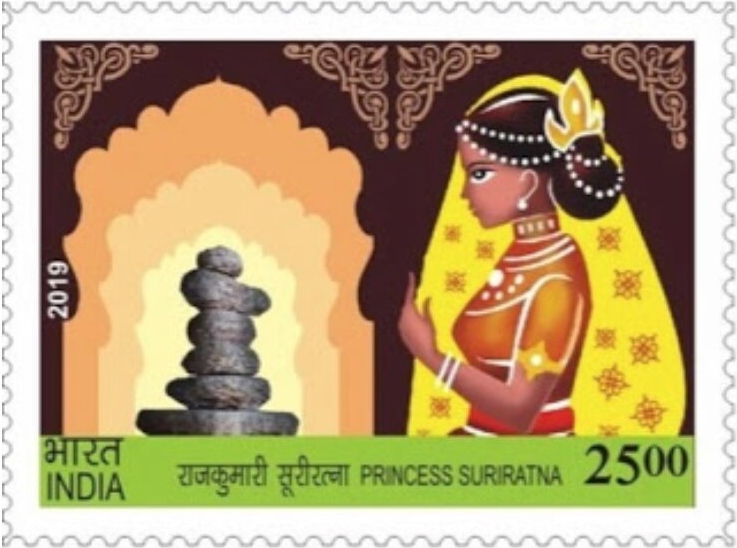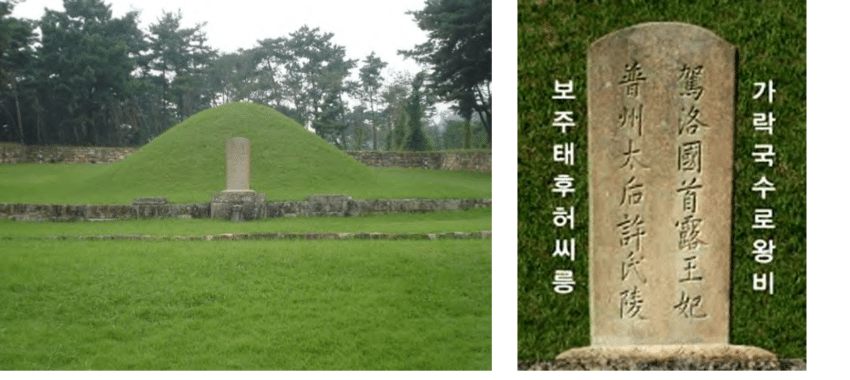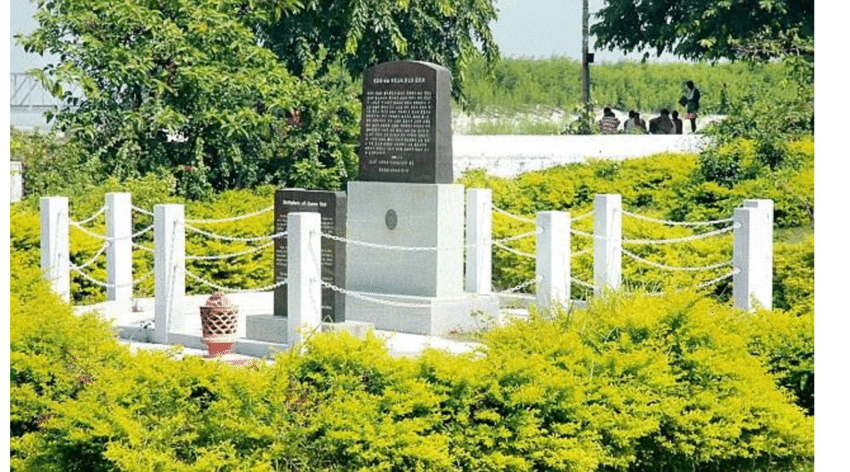.webp)
Aasha Khosa/New Delhi
Even before the grandiose Ram Mandir which is to be consecrated on January 22 at Ayodhya, thousands of Koreans visited the city every year; they came on a pilgrimage to pay their obeisance to Queen Heo Hwang-ok, who was Lord Ram descendent and consider Ayodhya as their material home (nanihal).
Koreans believe they are the descendents of the Indian princess Suriratna who is known in the Koreas as Heo Hwang-ok. The legend and historical accounts state that the Indian princess married King Suro of Geumgwan about 2,000 years ago and they started the Karaka dynasty.
The royal couple is considered the ancestors of more than two-thirds of Koreans today.

Postal stamp of princess Suriratna released by India Post
One version of the legend has it that the then Ayodhya King had a dream where God ordered him to send his 16-year-old daughter to Korea.
The ancient Korean text Saemguk Yusa (History of three kingdoms) the ancient storybook of Korea written in the 11 century AD, there was a kingdom of Korea with seven elders but no king. The elders prayed and one day an aakashvani (celestial voice) asked them to go to the top of a mountain. They danced and prayed and a golden chain descended from the skies at the one end of which had a golden chest.
When they opened the chest the next day, they found a baby boy and took him as their king. In No time, the boy became tall and handsome and he was named Kim Suro (Kim is for Golden in Korean) and he became the king.
He married Suriratna, who, Koreans believe, traveled on a ship from Ayuth with her brother to marry their king. The Seemguk Yusa tells the story of King Suro's wife coming from a distant country called Ayuta, which historians believe is referred to as Ayutthaya as the two names are phonetically similar.

Memorial of Queen Heo Hwang-ok in Korea
Also, the twin fish royal family symbol of Gaya Kingdom is deemed to be the symbol of ancient Hindu families of Ayodhya.
The descendants of Queen Heo Hwang-ok and King Kim Suro brought various kingdoms of Korea together and gave birth to the famous Karak dynasty, which is the ancient house that gave Korea some of its best and most illustrious citizens.
It is in this background that South Korea's former Ambassador to India Shin Bong-kil, was relieved to see the Ram temple being built in Ayodhya.
He said the India-South Korean relations are recorded in history and therefore very deep. "Old Asian history books in Korea contain stories of the marriage of an Indian princess to the local Korean king Kim Suro. Earlier, people considered it to be just a legend. However, archaeologists have discovered Indian artefacts in the tombs of the Karak Empire."
This legend has given way to many cultural and diplomatic relations between the two countries. India and South Korea celebrated 50 years of their diplomatic relationship in 2023.
 Memorial for Queen Suriratna alias Heo Hwang-ok on the banks of Saryu in Ayodhya
Memorial for Queen Suriratna alias Heo Hwang-ok on the banks of Saryu in Ayodhya
In 2001, a memorial to the Indian princess was inaugurated on the west bank of the Saryu River in Ayodhya. The two governments have also released a joint stamp on the legendary Queen.
The same year, the mayors of Ayutthaya and the South Korean city of Kim Hee signed a Sister City Bond to encourage mutual cultural development.
Uttar Pradesh Chief Minister Akhilesh Yadav agreed to develop the monument as a World Heritage Site.
In 2018, as part of a state visit, the First Lady of South Korea attended a ceremony marking the beginning of the upgrade of the Princess Suriratna Memorial, a joint project between the two Asian countries.
She also celebrated Diwali in Ayodhya by attending the Aarti on the banks of River Saryu.
ALSO READ: Muslim Indonesia has Ram and Ramayana as fulcrum of its culture, social milieu
Some of the members of the erstwhile dynasty are said to have possessed the stones which the princess carried with her as god’s blessing during the long and perilous sea journey. It is believed that the queen died at the age of 157.
Interestingly, as per statistics from the South Korean government, only 44 percent of people are religious and the rest are agnostics.
